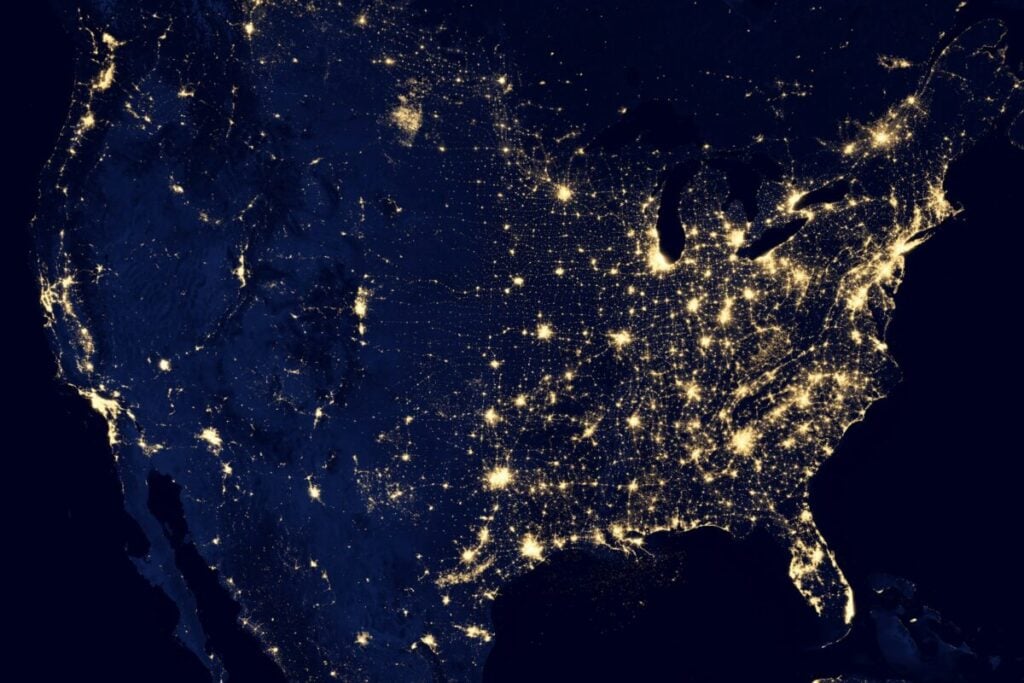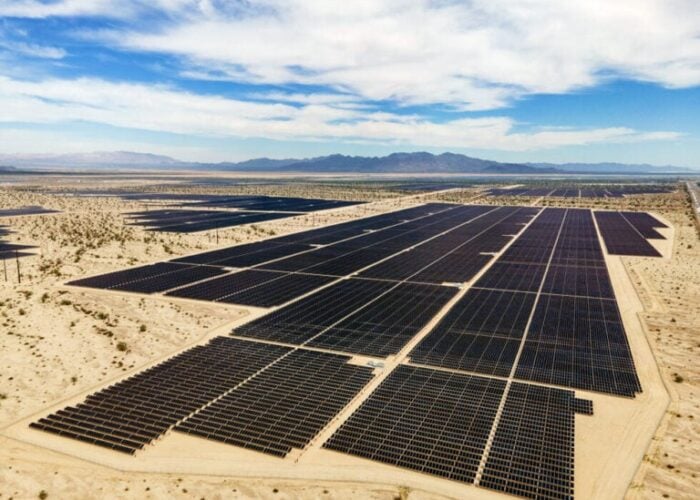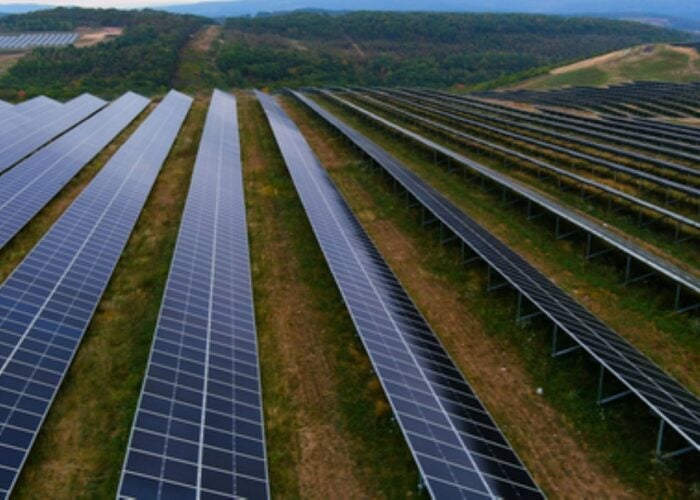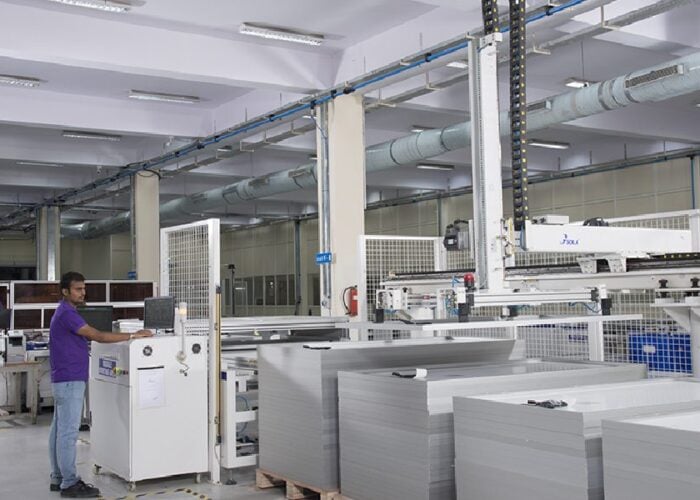
increased digital dependency. Image: NASA/Unsplash.
Virtual power plants are emerging as a potentially critical means of meeting the growing power demands from data centres in the US and beyond. David Pratt reports on the regulatory reforms needed to tap into the massive potential of VPPs as the digital revolution gathers pace.
As the world grows ever more connected, the rapid expansion of consumer digital data, crypto mining and AI development is pushing technology leaders to deploy data centres as fast as possible. Overall capital expenditure by the three leaders in AI adoption and data centre installation – Google, Microsoft and Amazon – was higher in 2023 than that of the entire US oil and gas industry, according to the International Energy Agency (IEA).
Try Premium for just $1
- Full premium access for the first month at only $1
- Converts to an annual rate after 30 days unless cancelled
- Cancel anytime during the trial period
Premium Benefits
- Expert industry analysis and interviews
- Digital access to PV Tech Power journal
- Exclusive event discounts
Or get the full Premium subscription right away
Or continue reading this article for free
The consequences of this growth are being keenly felt in the power sector, with individual facilities growing in scale from tens of megawatts to hyperscalers of 500MW or more under development. The proliferation of data centres is causing extreme changes in power consumption across the US, where 22GW of capacity had been installed by the end of 2023 – equivalent to 40% of global demand. This figure was forecast to increase by 5GW in 2024 alone, with another 60GW anticipated by 2035, according to consultancy Rystad Energy.
The evolving picture is expected to see data centres consume up to 9% of all US electricity generation by 2030, more than double the level as of mid-2024, creating a significant issue for utilities unable to keep up.
As energy transition consultant Glen Spry tells PV Tech Power: “[US] demand growth has been relatively stagnant for 20 years but now we’re entering an era of runaway demand growth. The sad reality is utilities are not able to build enough resources to offset the new demand coming in.”
This is already being felt in the largest data centre hubs in the US. Dominion Energy, which services “data centre alley” in Northern Virginia’s Loudoun County, connected 94 data centres in the five years to mid-2024. These sites consume around 4GW combined but continued expansion is forecast to see the gure reach 15GW by 2030. The situation led Dominion to admit in 2022 that it may not be able to meet the demands for energy in the areas densely populated with data centres.
This problem could be writ large across the US, with the Department of Energy (DOE) forecasting national peak demand to increase from around 800GW in 2024 to approximately 900GW in 2030 due to growth in energy-intensive data centres, alongside domestic manufacturing and electrification of transport and heating.
A risk posed to the US and global low-carbon transition is that utilities look to legacy forms of generation to lessen the growing imbalance between new demand and supply. The “drill baby, drill” mentality of the new US administration under President Donald Trump has added to what was already a bullish outlook by gas producers that fossil fuels would provide the main answer to power needs across the country, as Ben Hertz-Shargel, global head of grid edge at Wood Mackenzie, explains to PV Tech Power.
“Utilities are primarily asking what resources they can set up quickly to accommodate new customers, such as resuscitating mothballed conventional power plants or developing a new gas-fired power plant,” he says.
While the unveiling of a new and highly efficient open-source AI product by China-based DeepSeek has caused some to look again at their projections for datadriven load growth in the US, ongoing electrification and announced data centre projects are still likely to push power needs ever higher.
Turning to fossil fuels may not, however, present the solution as adding new capacity of any kind remains a challenge for all resources trying to connect to the US grid. Less than 20% of projects that applied for interconnection between 2000 and 2018 reached commercial operations by the end of 2023, according to the Lawrence Berkeley National Laboratory in the US, while the queues across the country continue to grow.
“We don’t have a snowball’s chance in hell of being able to build enough resources to bring on the amount of demand driven by data centres. It has to be the demand side that steps up in terms of flexibility to give the headroom and time for the utilities to build the resources,” Spry says.
A more responsive and flexible grid
Virtual power plants (VPPs) offer a ready-made solution to rapidly increasing power demand and slow deployment of new supply by aggregating groups of distributed energy resources already connected to the grid. These VPPs can leverage the combined flexibility of a wide range of resources, from solar panels and battery energy storage to the heating and cooling systems in homes or commercial and industrial (C&I) buildings.
Hertz-Shargel explains: “The key opportunity is that all of these resources have latent flexibility capable of making the grid more responsive and flexible, making it easier to accommodate elements on the demand side that are enormous and have a high-load factor. The grid has always operated under the supply side being very flexible but there is now awareness that the demand side can be part of the solution.”
Sunrun specialises in deploying residential solar and energy storage resources to create capacity for its VPP programmes in California, New England and Puerto Rico. In 2024 the company aggregated almost 25,000 customers, representing nearly 80MW of instantaneous peak.
Chris Rauscher, head of grid services and VPPs at Sunrun, tells PV Tech Power: “If you’re trying to build new utility-scale power plants to meet increased load, the biggest barriers are going to be around finding land where you can build and connect that power to the data centre. That stretches out timelines for five or ten years for deployment of the new generation. We install more than a nuclear power plant’s energy generating capacity every single year and we don’t have any of those issues,” he says.
“This is not a science project anymore or some futuristic thing, this has been happening for years at scale. We’re able to create VPPs out of existing systems and set up the dispatch structure in partnership with a utility and dispatch those batteries in a way that will not increase the peak on the distribution system, even though the MWh throughput over the day, month, year has increased.”
Some residential VPPs do not even require new generation. Renew Home, a merger between the Google Nest Renew business and software company OhmConnect launched in December 2023, has access to 3GW of VPP capacity via adjustments to smart thermostats installed in consumer homes across the US. Renew Home’s vice president of VPP growth Vince Faherty believes the company’s existing access to flexibility makes it a valuable and partially untapped resource.
“We’ve got unparalleled reach and ability to connect to homeowners, who are kind of the forgotten piece of the puzzle here when it comes to data expansion. There’s certainly a ton of effort focused on identifying what is the win for the utility and for a hyperscaler, which is pretty clearly additional capacity for both, but also communities,” he says.
“Deploying VPPs via smart thermostats to tens of thousands of homes to help them be part of this new capacity gives individual homeowners the tools to actually reduce costs but also potentially unlock the growth that we need for data centres, the economy and American competitiveness.”
Both Renew Home and Sunrun are investigating trilateral partnerships with utilities and data centres to leverage residential VPPs and provide new capacity from existing assets, with the latter suggesting a “contracting and regulatory innovation” to blanket the neighbourhood surrounding a data centre with solar and batteries.
Rauscher explains: “The novel structure is that instead of Sunrun having a one-to-one contract relationship with homeowners, we instead have that contracting relationship with the utility or the data centre because they are the off-taker. The utility is paying the homeowner a roof rental payment for hosting the solar, which is effectively a utility bill discount, and then the homeowners are also getting free backup power from the batteries.”
Ryan Hledik, principal at consultancy The Brattle Group, which has released several reports on the potential of VPPs, adds: “From the perspective of the data centres the key focus right now is on how quickly they can get connected when resource adequacy is a constraint. VPPs can tap into resources that have already been adopted by consumers and start using them to provide that resource adequacy. They can be deployed pretty quickly without needing to go through the interconnection queue, providing the speed that you don’t get otherwise.
‘A very attractive proposition’ for regulators
When this model is applied beyond homes to other distributed resources with latent flexibility, the potential is huge. DOE has estimated hundreds of GW of flexible capacity from distributed energy resources will be available for use in VPPs, with 80-160GW equivalent to 10-20% of the projected 2030 peak. This could deliver US$10 billion in annual savings to consumers, whether or not they are participating in a VPP.
“Instead of charging customers more to pay big companies to provide grid services and maintain the grid … you can now compensate customers to provide that value. That’s a very attractive proposition in the US for state regulatory commissions who want to avoid inevitably increasing rates on customers,” Hertz-Shargel says.
Even more flexibility could come from data centres themselves, which are equipped with platforms used to monitor the energy telemetry of each rack at an individual processor level, similar to systems used to monitor battery cells in a container. This permits data centres to selectively turn off whichever component they choose very quickly, allowing them to play in grid services markets to boost revenues.
Spry says: “The platforms are more than capable of providing sub-second response times so they’ve started to look at what ancillary services can be performed, whether it be instantaneous reserve, spinning reserve and frequency regulation or just good old-fashioned demand response. A lot of the installations are already well capable of delivering those valuable services.”
This capability is increasingly leading to the co-location of data centres used for more intensive computing with cryptocurrency mining, which operates on a different basis depending on the value that can be extracted from mining versus delivering grid flexibility. Data centres are also adding their own backup power generation behind the meter that could mitigate their impact; however, these are believed to be largely gas. Some sites are also adding battery energy storage systems to help lower demand on the grid; however, Hertz-Shargel believes such efforts remain limited.
“We are tracking over 92GW of data centre capacity and under 6% of those have some sort of co-located resource. This is something that everyone is interested in but the extent to which we are seeing co-located solar or a combined cycle gas plant or battery storage is still very infrequent,” he says.
“There needs to be resources to lean on at the scale of hundreds of MW. All of us would love to see that not be a fossil-based resource [but] it remains a challenge to develop renewables at the scale that companies are asking for them. It needs to be part of a collection of technologies on site.”
Beyond data centres, VPPs are already widely utilised across the C&I sector to provide capacity to wholesale markets. FERC Order 2222 opened up wholesale markets to VPPs in September 2020 and ensured “the rules of engagement have been set”, according to Spry. The speed at which these rules have been rolled out varies across jurisdictions, however, with Rauscher saying the wider impact has yet to emerge.
“The pace of change in wholesale markets is glacial. What we have seen unfortunately is FERC order 2222, which was an attempt to open up the wholesale markets to aggregation, falling at on its face. Market operators are not used to aggregations of many different systems, they haven’t broken out of that mindset yet,” he says.
Hertz-Shargel agrees: “There’s a cultural trust issue that needs to be further resolved at utilities. Getting buy-in from operations and planning teams is the key limitation in getting a VPP procured from customers to be fully leaned on by the utility and truly leveraged.”
Rauscher continues: “There are no technical, hardware and software barriers to providing VPP services to data centres to meet that increasing demand on the grid [but] commercially you cannot because you would take a loss and negatively impact your customers. Over the next decade, if we could have meaningful access to wholesale markets, that could be a very big unlock.
The key to this unlock, according to Spry, will come when the capabilities of distributed energy resources aggregation are viewed equally to traditional assets. “If they perform exactly the same, they should be remunerated the same. That would be the single most influential piece of regulation that could come through,” he says.
In order for this to be achieved, utilities need to be incentivised to procure capacity from VPPs in the same way that encourages them to build new physical infrastructure, which allows them to claim a regulated rate of return from the investment. If utilities were able to earn a similar form of return on the operational expenses associated with aggregating capacity, or by meeting requirements under performance incentive mechanisms, VPPs would benefit from a level playing field. This could be delivered if state regulators encouraged utilities to set up VPPs in their markets, potentially through the kind of mandates that have allowed renewables to flourish.
Rauscher agrees: “I just would love for regulators around the country to do their job and push utilities to have a VPP in their territory. VPPs are not nearly as complex as people think that they are. The utility does not need to bring a case before their regulator to spend money on new smart meters or software systems or anything like that in order to have a VPP.”
While progress is likely to be made on a state-by-state level, Hertz-Shargel argues that the National Association of Regulatory Utility Commissioners has a role to play in getting utility commissions to collaborate on a standardised framework to ensure prices achievable by VPPs match their value.
Once regulators and utilities are fully cognisant of the benefits offered by VPPs and motivated to make good use of the assets already connected to the grid, the threat posed by data centres could be lessened substantially. Without these aggregated resources, data centres may be left in the queue alongside every other energy resource trying to muscle on to the grid, stunting growth within a digital age reliant on ever-growing data capacity.
As Hledik states: “It’s in everyone’s interest to make VPPs a bigger part of the equation. Utilities and data centre interests are aligned here and they both will benefit from getting this load connected.”






